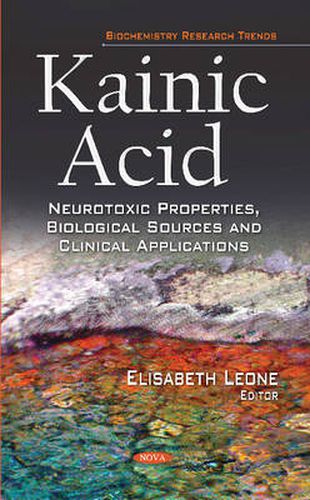Readings Newsletter
Become a Readings Member to make your shopping experience even easier.
Sign in or sign up for free!
You’re not far away from qualifying for FREE standard shipping within Australia
You’ve qualified for FREE standard shipping within Australia
The cart is loading…






Kainic acid is a naturally occurring amino acid that is isolated from red algae and is known to cause amnesic shellfish poisoning via the activation of AMPA and kainate receptors in the hippocampus. Kainic acid is an analogue of glutamate and can modulate the transmission of glutamate. It’s neurotoxic potency has been shown to be 30 fold that of glutamate. Glutamate is an excitatory neurotransmitter that exerts its postsynaptic effects through ionotropic and metabotropic receptors. Of the ionotropic glutamate receptors (GluRs), kainic acid has a high affinity for 5 subtypes (KA1 and KA2, GluR5, GluR6, GluR7). Kainate receptors play a significant role in the physiological functioning and activity of numerous systems in the brain. This book discusses the neurotoxic properties of kainic acid, as well as the biological sources and clinical applications.
$9.00 standard shipping within Australia
FREE standard shipping within Australia for orders over $100.00
Express & International shipping calculated at checkout
Kainic acid is a naturally occurring amino acid that is isolated from red algae and is known to cause amnesic shellfish poisoning via the activation of AMPA and kainate receptors in the hippocampus. Kainic acid is an analogue of glutamate and can modulate the transmission of glutamate. It’s neurotoxic potency has been shown to be 30 fold that of glutamate. Glutamate is an excitatory neurotransmitter that exerts its postsynaptic effects through ionotropic and metabotropic receptors. Of the ionotropic glutamate receptors (GluRs), kainic acid has a high affinity for 5 subtypes (KA1 and KA2, GluR5, GluR6, GluR7). Kainate receptors play a significant role in the physiological functioning and activity of numerous systems in the brain. This book discusses the neurotoxic properties of kainic acid, as well as the biological sources and clinical applications.